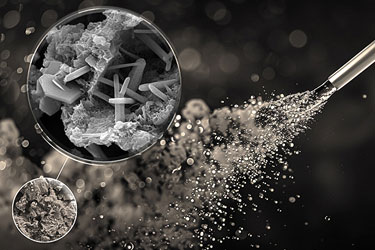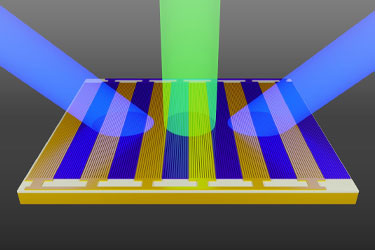A New Process for Concrete Manufacturing: A Breakthrough in Efficient CO2 Sequestration and Quality Assurance
In modern society, the importance of concrete as one of the world's most consumed materials cannot be overstated. However, the traditional concrete manufacturing process poses serious environmental challenges and generates large amounts of CO2 emissions.

The Current State of Concrete Manufacturing and CO2 Emissions
To make concrete in its simplest form, workers mix water, fine aggregates (such as sand), coarse aggregates (such as gravel) and cement. But this process, the cement and concrete industries emit as much as 8% of global greenhouse gas emissions in CO2. To combat this problem, scientists have been working to develop new technologies to reduce CO2 emissions from cement and concrete production and turn them into environmentally beneficial "carbon sink" products.
Existing CO2 Sequestration Methods and Limitations in Concrete Manufacturing
At present, there are two main methods of CO2 sequestration in the process of concrete manufacturing. One is hardened concrete carbonation, in which solid concrete blocks are placed in a chamber and injected with carbon dioxide gas under high pressure; the other is freshly fired concrete carbonation, in which carbon dioxide gas is injected into a mixture of water, cement and aggregate during the production of concrete.
However, there are numerous problems with both methods. Although it is possible for some of the injected carbon dioxide to react with the cement to form solid calcium carbonate crystals, the carbon dioxide capture efficiency is low and the energy consumption is high. More critically, the strength of the concrete produced by these methods tends to be weakened, thus greatly limiting its scope for practical applications.
New concrete manufacturing process and advantages
In their latest study, the researchers used a new burnt concrete carbonation process with an innovative twist. Instead of injecting carbon dioxide while mixing all the ingredients, they first injected the carbon dioxide gas into water mixed with a small amount of cement powder, and then mixed the resulting carbonic acid suspension with other cements and aggregates, ultimately creating the new concrete.
The results of this innovative process are remarkable. Not only was a CO2 sequestration rate of up to 45% achieved, but the concrete produced was comparable in strength to ordinary concrete. The new method is also technically simple and easy to implement, and is able to reuse some of the CO2 emitted during the concrete manufacturing process.
Future prospects
This innovative new concrete manufacturing process offers new hope for the industry. In the future, as the technology continues to improve and spread, it is expected to play an important role in reducing carbon emissions from the concrete manufacturing process, and make a positive contribution to the goal of sustainable development.
MORE FROM WIRED

- Apple's fall event: iPhone 16 series makes a stunning debut

- Space-Time Metasurfaces: Unlocking a New Future for Wireless Communications and Optical Applications

- Novel RNA Construction Module Enables Efficient Production of High-Density RNA Microarrays
- Aug,30,2024

- Innovative Applications of Drone Technology in Agriculture
- Aug,21,2024

- OpenAI Launches SearchGPT, an Innovative AI Search Engine
- Aug,19,2024

- Google Pixel 8A: AI technology-enhanced, the king of price-performance ratio
- Aug,07,2024

- Application of 5G in Intelligent Transportation System
- Aug,01,2024